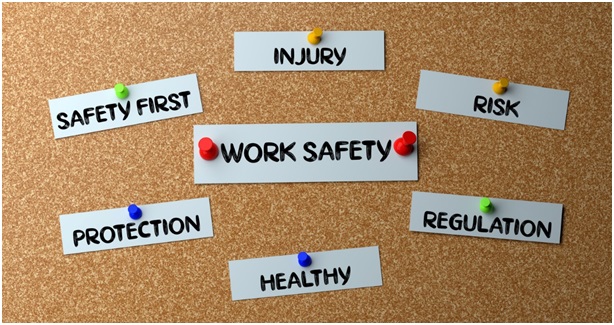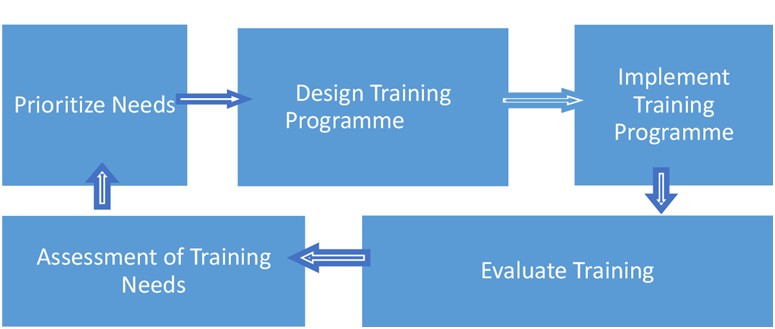Between 2017 and 2020, 1,109 deaths and over 4,000 injuries were reported in India’s registered factories annually on average. Workplace accidents can have disastrous results, including fatalities, property damage, financial losses, and injuries. Organizations place a high priority on safety, and one of the best methods to reduce accidents is through extensive training initiatives. Appropriate training is essential to workplace safety because it gives workers the know-how to recognize and avoid possible threats. The importance of accident prevention training and its potential to promote a safer workplace will be discussed in this article.
Understanding the Role of Training
In the context of workplace safety, training is an organized method of teaching managers and staff about the numerous facets of safety. This covers a broad range of subjects, including the identification of hazards, emergency response protocols, the appropriate use of personal protective equipment (PPE), and the safe handling of hazardous chemicals. Giving staff members the knowledge and skills they need to identify possible hazards and prevent accidents is the main goal of training.
The Impact of Accidents
Before we delve into the ways in which training can minimize accidents, it’s crucial to comprehend the consequences of these incidents. Accidents at work can result in severe injuries or even fatalities, causing untold physical and emotional suffering to the victims and their families. Besides the human toll, accidents impose significant financial burdens on organizations.

Costs associated with medical bills, workers’ compensation claims, potential lawsuits, and property damage can be staggering. Additionally, accidents can tarnish a company’s reputation, making it challenging to attract and retain both customers and talented employees.
Benefits of Training in Accident Prevention
- Accident Prevention: Knowledge and skills acquired via appropriate training enable workers to recognize possible risks and take preventative action. They get knowledge on how to properly operate safety equipment, handle emergencies, and adhere to safety procedures. This preventive measure lowers the possibility of accidents happening in the first place.
- Lowering Injury Rates: Employees with proper training are better able to react when accidents do, regrettably, happen. They may offer first aid right away, which can greatly lessen the severity of wounds and improve the patient’s chances of making a full recovery.
- Regulation Adherence: Training guarantees that establishments follow national, state, and local safety regulations. With proper training, it is possible to prevent penalties and legal repercussions for breaking safety regulations.
- Reducing Insurance Costs: Reducing workers’ compensation and liability insurance costs might result from a great safety record attained through training. This lowers insurance costs, which has a direct effect on a company’s financial stability.
- Increasing Worker Morale: When workers see that their employer places a high priority on their safety, morale and job satisfaction may increase. A happier and safer workplace translates into higher employee retention and productivity.
- Boosting the Image of the Organization: An organization’s reputation can be improved by its dedication to safety and by the obvious application of training. Businesses that have a strong safety culture are more likely to gain the trust and engagement of their customers, investors, and partners.
- Enhancing Operational Efficiency: Process optimization and the elimination of workplace inefficiencies that can result in accidents are frequent topics of training. This results in smoother operations and cost savings for the organization.

Effective Implementation of Training Programs
Organizations must strategically and thoroughly implement these programs in order to profit from training in accident prevention. The following are essential actions for successful implementation:
- Evaluate Risks: Start by determining the precise dangers and risks present in your place of employment. Your training program’s cornerstone will be this assessment.
- Customize Training: Make sure your training program is relevant to your business and sector and addresses the risks that have been identified.
- Engage Staff: It’s critical to include staff members in the training process. Their involvement fosters a safety-focused culture and they can offer insightful opinions.
- Frequent Updates: Training need to be a continuous procedure. It’s critical to maintain your training materials current because procedures, machinery, and regulations are subject to change.
- Measurement and Evaluation: Use key performance indicators (KPIs) to gauge how well your training course is working. This enables you to pinpoint regions in need of development.
- Continuous Improvement: Make ongoing changes to your training program by utilizing the evaluation data.

Conclusion
To sum up, training is a vital component of every company’s commitment to worker safety. Establishing a culture of safety that benefits workers, organizations, and the larger community is more important than merely adhering to regulations. Training saves expenses associated with accidents—human, material, and reputational—and is an investment that yields many benefits. Training is not only a choice in the current environment, where safety is prioritized; it is a must for companies that want to reduce accidents and foster a safer, more productive work environment. Constant training, whether in the form of online courses, practical exercises, or safety drills, can make the difference between a safe and harmful workplace.



